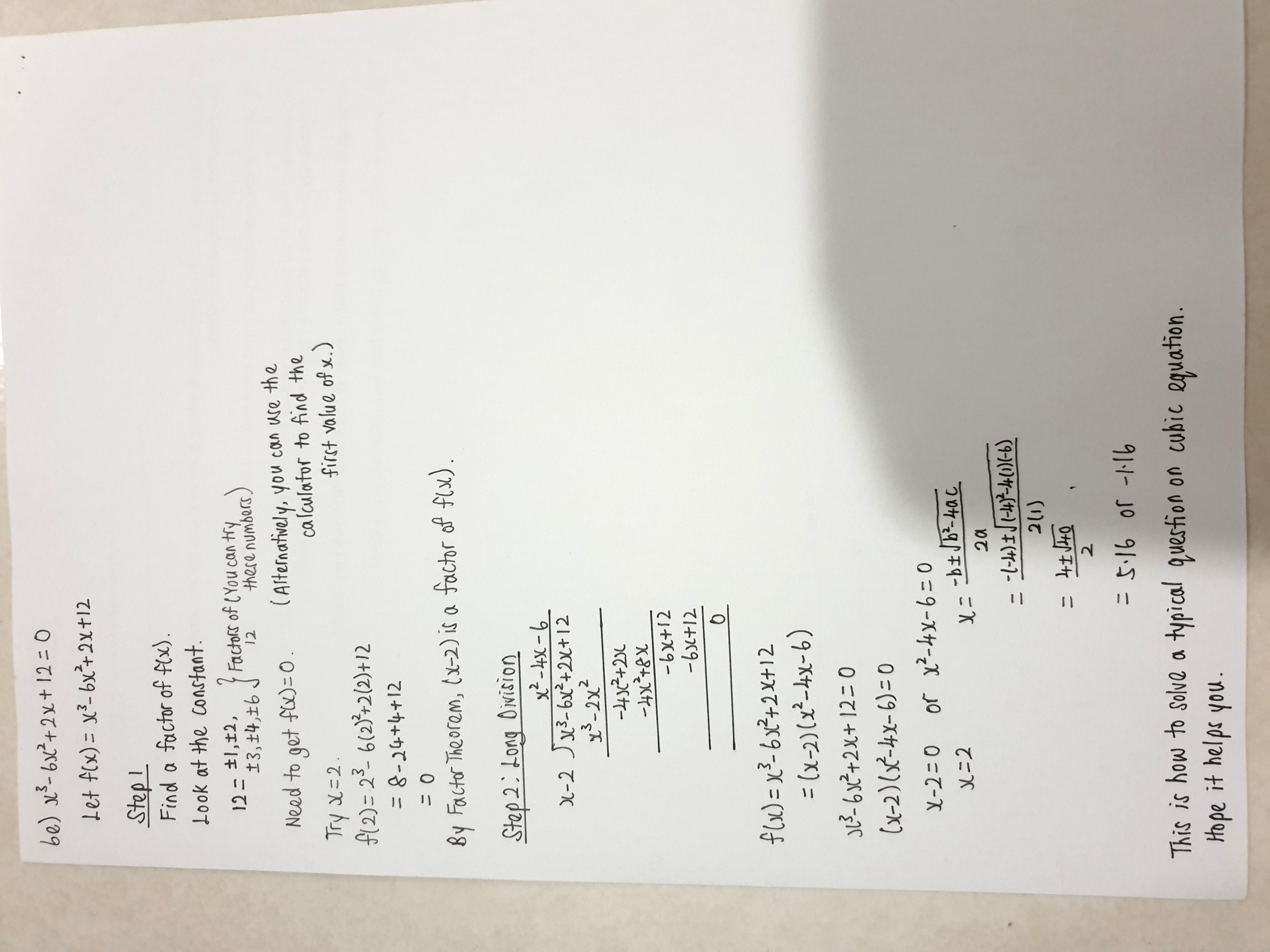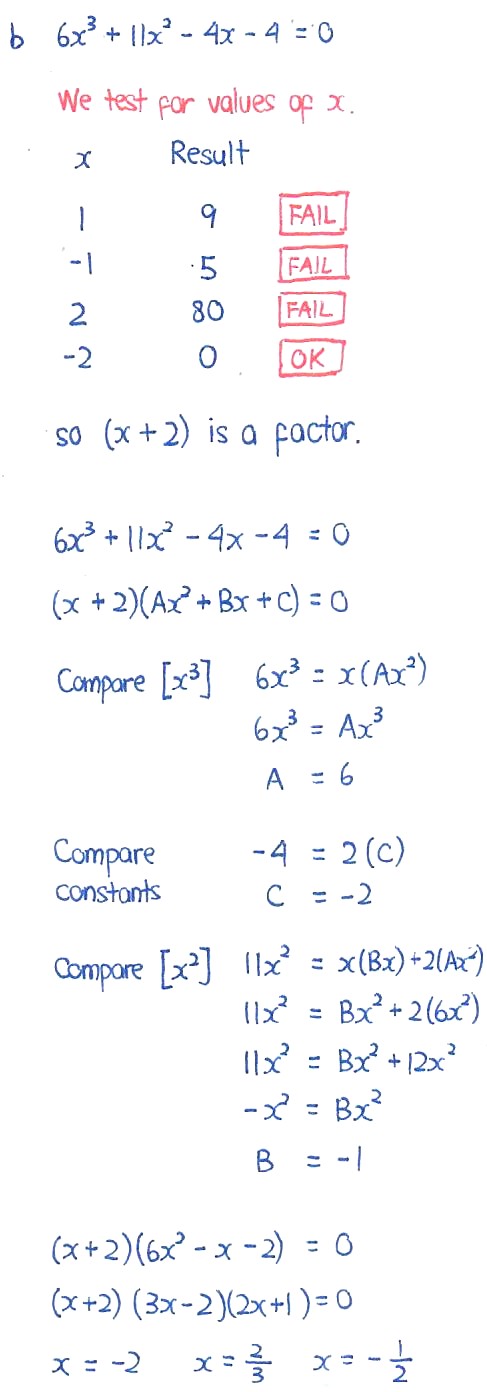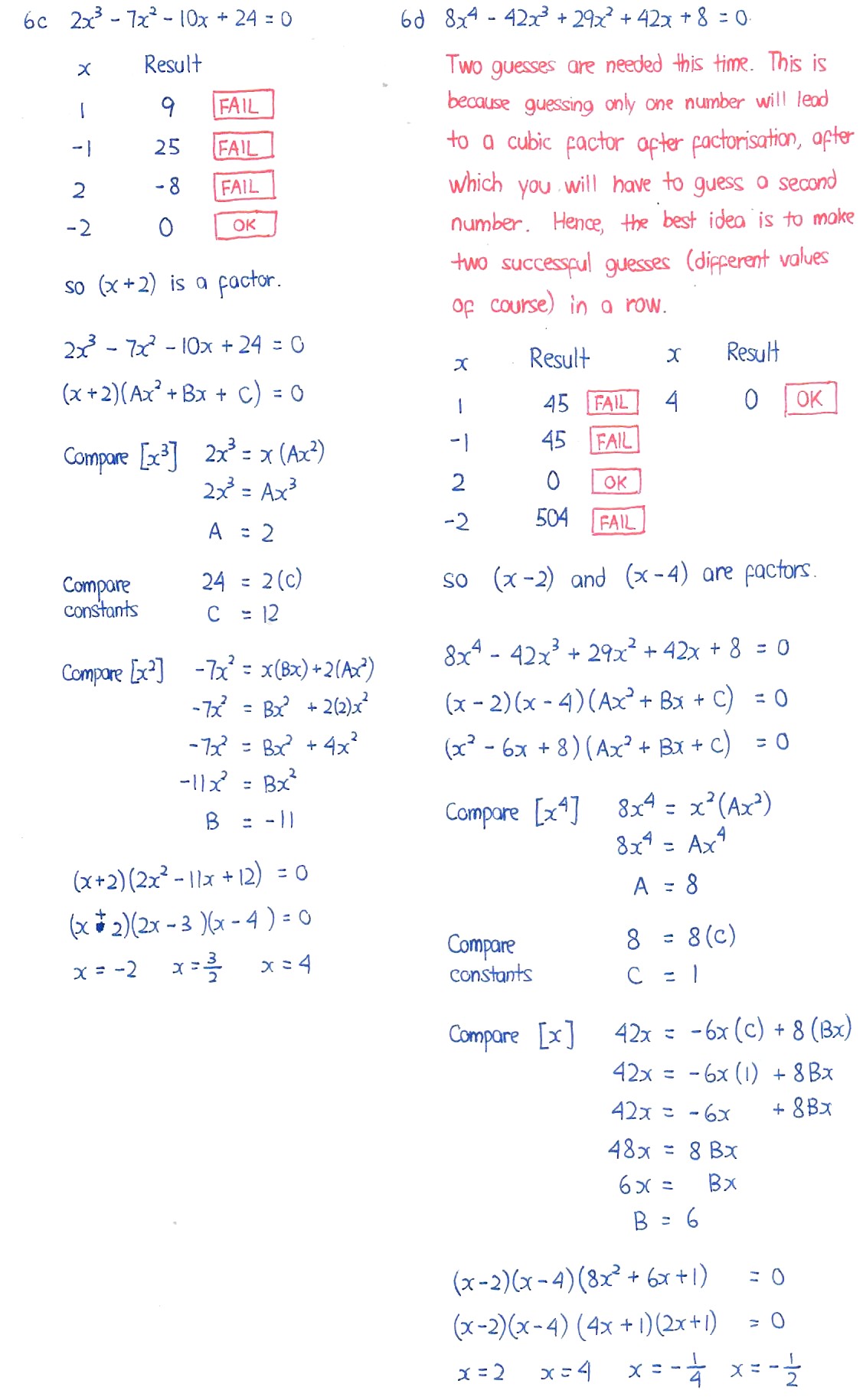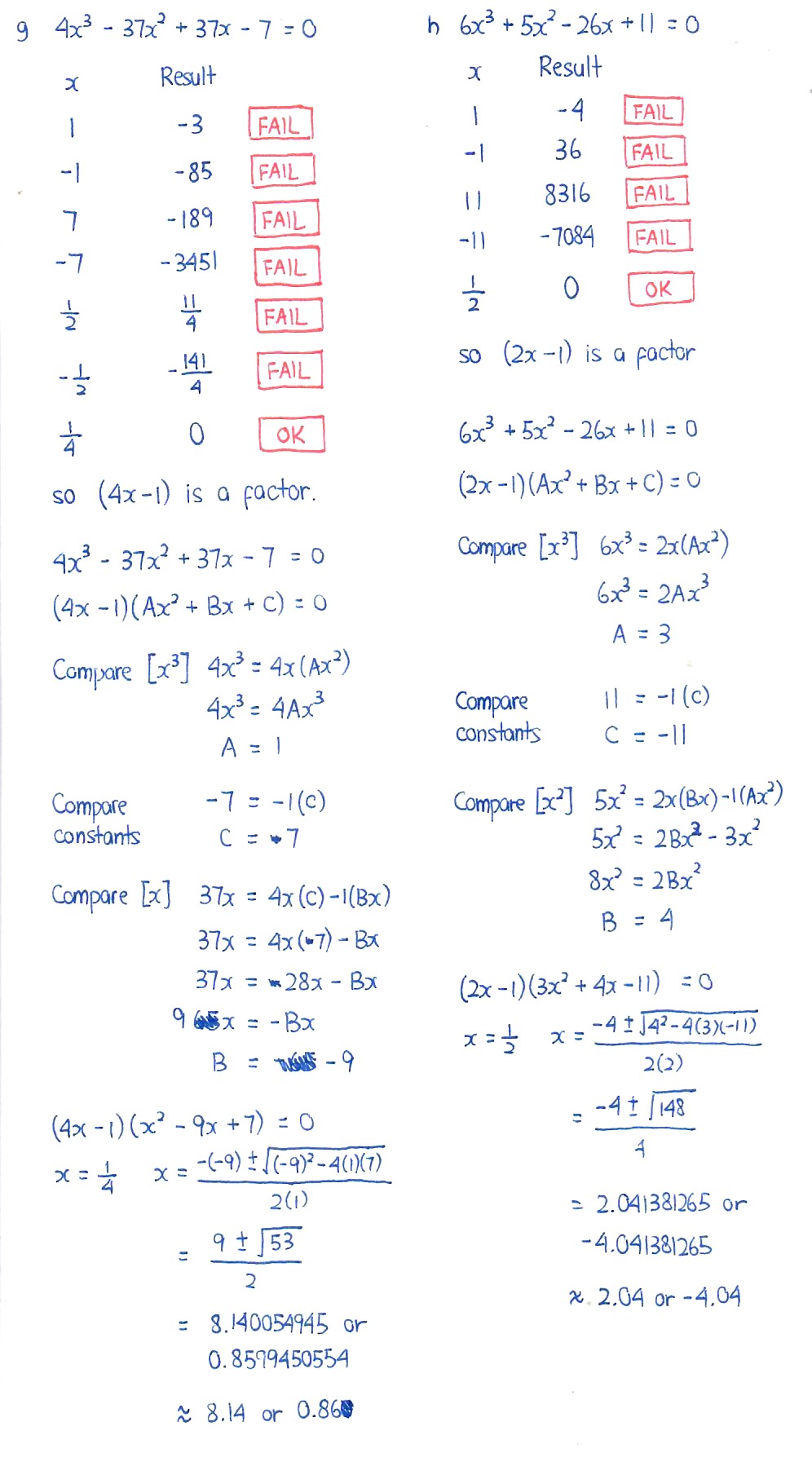Ask Singapore Homework?
Upload a photo of a Singapore homework and someone will email you the solution for free.

Question
secondary 4 | A Maths
6 Answers Below
Anyone can contribute an answer, even non-tutors.

Thank you
So, if the cubic expression is ax3 + bx2 + cx + d, then the numbers to guess are factors of d, both positive and negative.
Not within your syllabus, but other guessable tries are factors of d/a or a/d and their negatives.
See 6 Answers
1. Guess a number which fits the equation. Typically whole numbers for your syllabus. Note that if the equation is not cubic, but say power 4, we need to guess two numbers. If power 5, three numbers. And so on.
2. Transform the guessed number into a factor. For example, if x = 1 is a solution, then (x - 1) is a factor.
3. Perform long division of the cubic expression with the factor to obtain a quotient in the form Ax2 + Bx + C and then factorise the expression. Alternatively, you can do comparing coefficients method. Since you have factored out a linear expression from a cubic equation, you will obtain a quadratic term (as per what I wrote).
4. We proceed to solve the equation in the factorised form.
Similar techniques. The other tutor has done a good job for Q6e, so I will be skipping Q6e.









